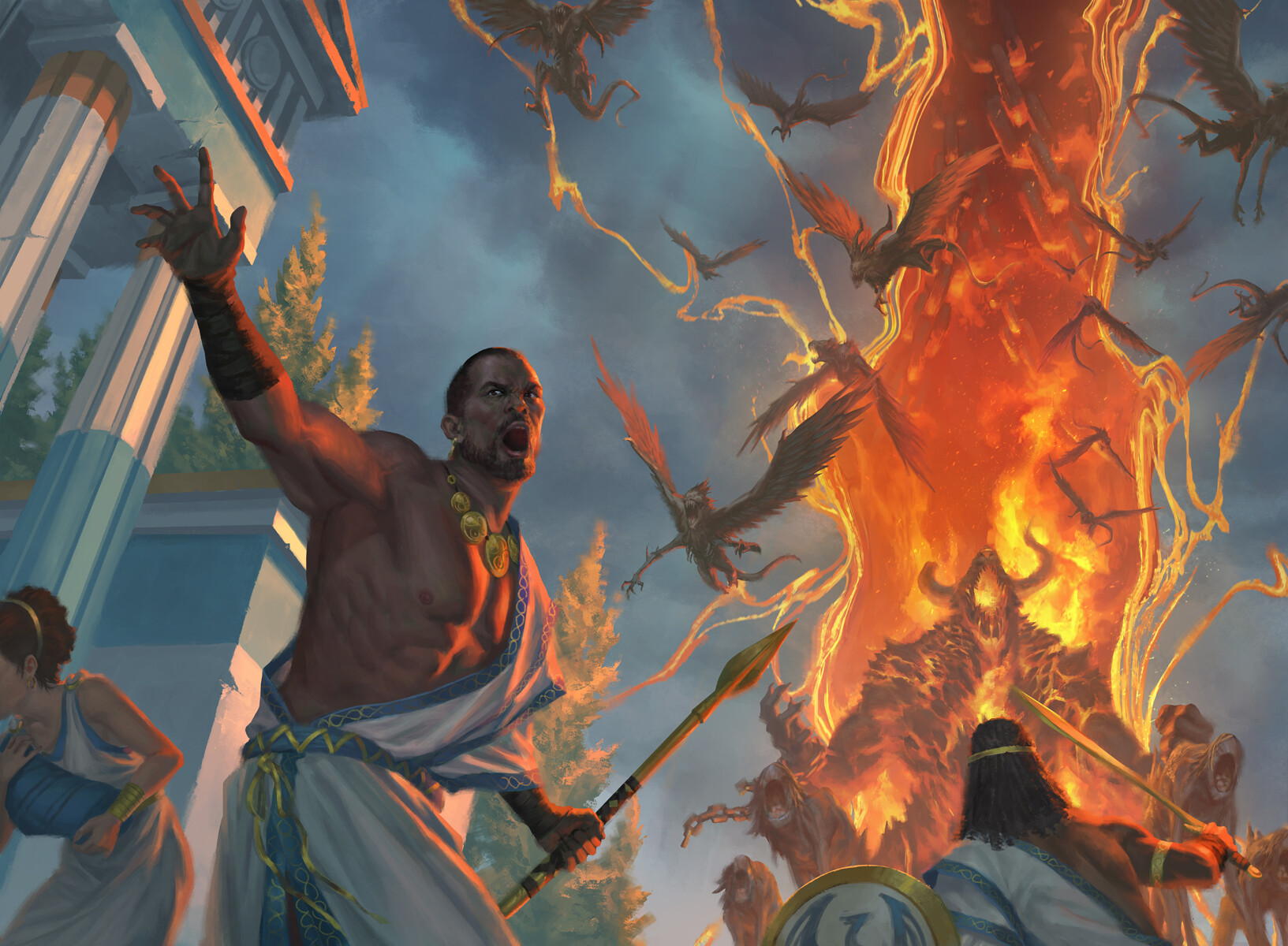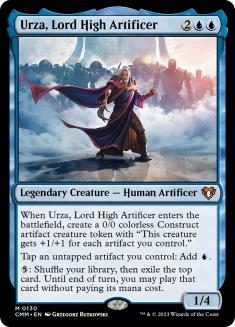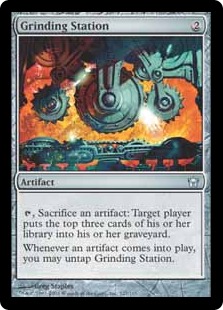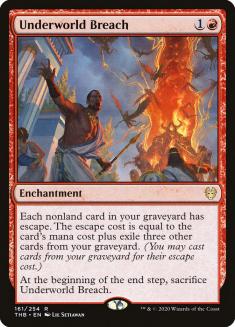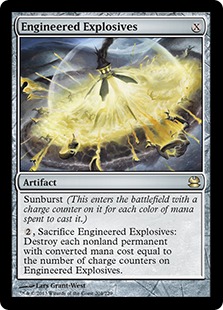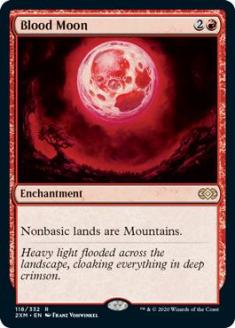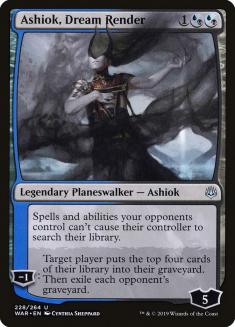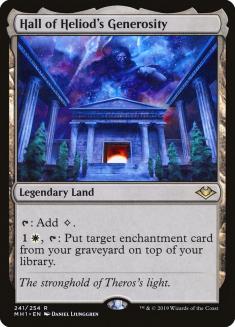Modern is checking the right boxes these days for fans of control. It has been bleak for years, but all of that changed when Cryptic Command found Mystic Sanctuary. This combination is a shell so easy to incorporate that any deck with a heavy dose of blue can’t resist the temptation. Being a player who dabbles in Islands, I could not resist its siren song. I had a tough decision between running Dimir Whirza or Azorius Control, both of which performed well for me during testing.
I broke down the pros and cons of each viable control deck in Modern in a previous article. Depending on the best deck in the format, a contest between Amulet Titan and Grinding Breach, one of these control decks would have been the correct choice. It turns out, the best Cryptic Command + Mystic Sanctuary deck was in one of the top decks, but it wasn’t built optimally just yet.
Creatures (7)
Planeswalkers (4)
Lands (21)
Spells (28)

Team BCW worked tirelessly to perfect Grinding Breach, abandoning the control plan and then crawling back to it when times were getting rough. The combo core of Grinding Breach is powerful; however, the control elements push it over the edge. Combo decks have an inherent edge Game 1 against the field, due to the lack of interaction and volume of dead cards at the opponent’s disposal. This dynamic changes after sideboard, except with Grinding Breach that somehow retains its effectiveness.
With each sideboarded game that passed at SCG Regionals, hate cards were cast and presented minor barriers that were easily overcome. Out of the eight rounds of Swiss and three rounds in Top 8, I lost a total of two games, neither after sideboard. There is an Ironworks feel to this deck, with the resiliency of a typical control deck. A portion of that power is rooted in Cryptic Command being returned by Mystic Sanctuary; however, there are other elements that make it as resilient as it is in the late-game.
The team captain, Urza, Lord High Artificer, was to thank for my Game 2 and Game 3 victories. Although it did help against some of the grindier decks Game 1, Urza was the ultimate punisher against enemies who were constantly compelled to take out removal. This is understandable, due to its lack of impact against the actual combo itself. The conventional wisdom is to shave creature removal to bring in Rest in Peace; Damping Sphere; Leyline of the Void; Ashiok, Dream Render; and/or Stony Silence. These cards all hurt Ironworks so badly that it forced a response of four Nature’s Claim to combat them. Once Urza joined Modern, the gameplan became much easier.
The power that Urza produces is enough to easily close out a game in a few minutes. The damage clock provided is primary, but the secondary card advantage, joined by the tertiary mana production, makes Urza an automatic include in decks like this. Two copies made sense for Game 1 and the third copy is available when all the opponents try to shut down Grinding Station with very specific hate cards. I did include a Wear // Tear and a Detention Sphere to threaten the combo when preventative measures are in place, but it was rarely needed. The tertiary advantage of Urza is the boost that makes the control aspect of Grinding Breach shine.
Cryptic Command and Archmage’s Charm can be mediocre without a threat on the battlefield. This could be a powerful planeswalker like Teferi, Time Raveler; a piece of the combo; or one of the powerful blue creatures included in this list. When Urza happens to be the Turn 4 tap-out, often it can have Cryptic Command backup from the artifacts already on the battlefield. This series of play was used by most of the blue decks in Modern over the last few months with great success. Cryptic Command has been in Modern for a long time and it is not just Mystic Sanctuary that has it at the top of the power chart. The combination of threats in Grinding Breach and using the defense of black and blue disruption makes it currently the best deck in the format.
Just like Splinter Twin of old, this control shell has a deadly two-card combo that can easily kill on Turn 3. Some of my games had the Turn 1 Thoughtseize, Turn 2 Grinding Station, and Turn 3 Underworld Breach for the win. Having just one zero-mana artifact is enough to get the party started, digging for a Mox Amber and an Emry, Lurker of the Loch for the kill. Even more potent than combo decks of old, Grinding Breach often doesn’t need a second card to combo off. As the games get grindy, especially after sideboard, cards will find their way to the graveyard with relative ease. This sets up Underworld Breach as a one-card combo, which adds to the effectiveness of the control shell around it. If opponents are always one card away from death, sideboards must contain specific answers against a graveyard victory. This leads into the same trap that my opponents fell into at SCG Regionals – being over-prepared for only a portion of the best deck.
The combo relies on some artifacts, but outside of Grinding Station, each one is useful with the rest of the deck. Mox Amber gets a lot of hate and for good reason – it’s a poor replacement for Mox Opal, not working well when draws don’t contain an Emry, Lurker of the Loch or Teferi, Time Raveler. Even with the obvious weaknesses, Mox Amber allows this deck to exist in its current form. The rest of the artifacts are amazing and continue to push the boundaries of consistency. Mishra’s Bauble and Arcum’s Astrolabe are two of the biggest offenders in Modern but manage to stay legal through some tough times. They also allow for broken combos like this and give the deckbuilder the luxury to cut a few lands.
Engineered Explosives has been a staple in artifact-based combo decks for many years. In Grinding Breach, it provides the perfect catch-all and can be used to combo. Engineered Explosives gives this deck that control feeling, providing an outlet to destroy multiple threats when applicable. Removing threats from the battlefield is something that Grinding Breach doesn’t do much of, as most of its control power comes from preventative measures like Thoughtseize, Cryptic Command, and Archmage’s Charm. When scary things resolve, Engineered Explosives is joined by a few other powerful control elements to clear things up.
Teferi, Time Raveler is the card that’s too good for the game of Magic but will never get banned. The most egregious piece to this planeswalker is the static ability, which used to cost us older folks five mana to achieve back in the day. For three mana, reducing the opponent to sorcery-speed interaction can end the game quickly. The main ability on Teferi is the bounce and card draw. Having four copies of this mighty planeswalker gives the Grinding Breach player a well of maindeck answers, which combo decks usually do not have. Most of the powerful combo decks of old relied on the element of surprise Game 1, then receives backup after sideboarding. Grinding Breach has that perfect control infusion, giving it Teferi, Thoughtseize, Fatal Push, Cryptic Command, Archmage’s Charm, and Engineered Explosives Game 1 to push through the combo. If all else fails, Urza, Lord High Artificer is always there to bail the blue mage out.
During testing, Corey Baumeister ranted that Teferi does everything against every deck and that there should be four. Although he may miss the mark on issues of low importance, he was dead on with this one. Playing fewer than four of a card like this in a combo deck with space is unfathomable at this point. There are times that I sideboard one or two out against very aggressive decks, but it’s so good against the rest of the field. Often it’s a must-kill after it arrives, returning an Arcum’s Astrolabe to hand, producing that card advantage that can lead into a clean kill soon after. Each of these cards, outside of the stock combo pieces, helps Grinding Breach masquerade as a typical Urza control deck, just to quickly swipe the game in a blink of an eye. The sideboard also does the control plan justice, while keeping the combo intact.
No combo deck that I craft would depart the workbench without a couple of Blood Moons in the sideboard. Stealing games on Turn 3 by not allowing the opponent to cast another spell is too good not to attempt. I always get a lot of blowback from my team about my regular inclusion of Blood Moon. Their argument is to play more generic cards that can be used to fix targeted weak matchups. That sounds all well and good, but much less exciting than cheesing with Blood Moon. Even though it has been in the format since the beginning, it always surprises the opponent when dropped from the four-color blue deck.
The sideboard is full of blue interaction spells, like Mystical Dispute, Ceremonious Rejection, and Aether Gust. Each of these counterspells is a powerful Modern staple at this point and I wouldn’t change the setup moving forward. Having a hefty amount of additional disruption is good, but remember the power of Urza. Killing with the combo is not as easy to do, even with the additional protection. Most games I was using the countermagic aggressively against the opponent’s threats, which showcased the power of Cryptic Command and Mystic Sanctuary even further. After sideboard, Grinding Breach gets closer to a true control deck, especially since I typically sideboard out one of each of the combo pieces.
Ashiok, Dream Render; Surgical Extraction; and Timely Reinforcements joined the sideboard for very specific matchups. I knew Amulet Titan would be represented, making Ashiok the MVP. Blood Moon and Aether Gust also helped, but Ashiok really slows the deck down and is immune to artifact or enchantment hate they may bring in. Nothing in the deck is safe from Beast Within, but fortunately there are quite a few targets for that answer. It’s also difficult to interact with when Grinding Breach turns closer to a control deck, with all the hand and spell disruption at its disposal.
Surgical Extraction is used with Ashiok for graveyard-based decks, but is really for the mirror. It’s tough for the mirror to maneuver around it, because it can nab a few different pieces to make the combo fall apart for good. Ashiok, Dream Render is much worse against Grinding Breach, but both graveyard disruption spells can be used together if paired against Dredge or Bridgevine. Timely Reinforcements is an obvious attack against all things red, just in case any brave soul ventures out with Lava Spike in hand.
Looking back on my successful SCG Regionals venture, the only thing I would change is the manabase. The team had some laughs when debriefing about the four-color manabase. This was the one piece I didn’t change prior to going into the tournament and luckily I wasn’t punished too badly for it. The four-color Grinding Breach list you see here was crafted to find a way to get Thoughtseize to help the combo. It was an amazing inclusion and worth the mana risk, but the chosen lands could have been a bit more synergistic with Mystic Sanctuary. Having a Hall of Heliod’s Generosity, a Snow-Covered Swamp, and a Sacred Foundry was too much of a strain on the mandatory Island component. I would cut the Hall of Heliod’s Generosity in favor of another Flooded Strand, to give additional colored mana for a deck that requires four different colors.
Outside of the manabase, four-color Grinding Breach was a blast to play. I had that nostalgia kick in from my old Ironworks days, as well as the comfort that traditional control provides. If you truly want the best of both worlds, this is the deck to provide it.

